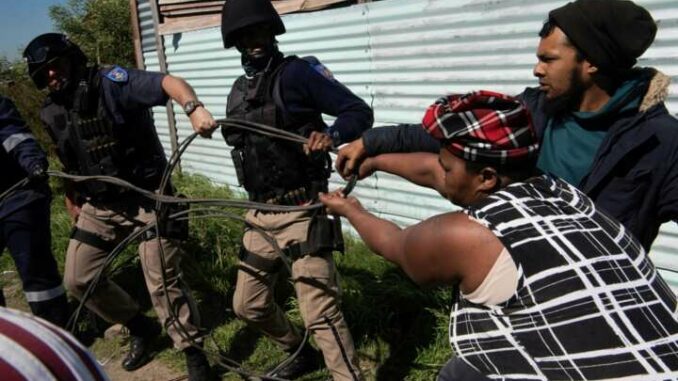
Unregulated connections to the grid are commonplace in South Africa, where there is a chronic shortage of electricity since 2021. With some neighborhoods not even connected to the grid, residents are reduced to the sometimes dangerous “système D”.
In a South Africa beset by a severe electricity shortage, illegal connections to the grid are a common occurrence. Some informal settlements are simply not connected at all, and the occupants of corrugated iron shacks resort to the sometimes hazardous “system D”. In other cases, it is all about finding ways to avoid paying the bill.
According to the authorities, these methods are exacerbating the energy crisis. After a lull in recent months, power cuts resumed in earnest this week in Africa’s leading industrial powerhouse, with its gloomy economic and social climate. And 60 million South Africans are once again without power for record lengths of time, up to almost twelve hours a day, during imposed and scheduled load shedding.
On Wednesday September 13, dozens of police officers and civil servants launched a vast disconnection operation in several Cape Town suburbs. According to the city, illegal electricity consumption cost the equivalent of almost 200,000 euros last quarter. For hours, the police, armed with shovels, large shears and gloves, flushed out the buried cables. Some tried to stop them, to explain.
Some recognize the potential danger. “When it rains, you can see smoke coming out of the ground where the wires are buried. It’s very dangerous,” sighs a neighbor, who declined to give his name. By the end of the day, kilometers of multicolored cables had been carried away in the backs of pickup trucks. And many homes were plunged back into darkness.
State-owned Eskom supplies most of the electricity. But weighed down by outdated coal-fired power plants and saddled with debt after years of corruption under President Jacob Zuma (2009-2018), the company is unable to keep up with demand. Since the energy crisis worsened at the end of 2021, many South Africans in affluent neighborhoods have equipped themselves. They can now rely on other energy sources, such as solar panels.
